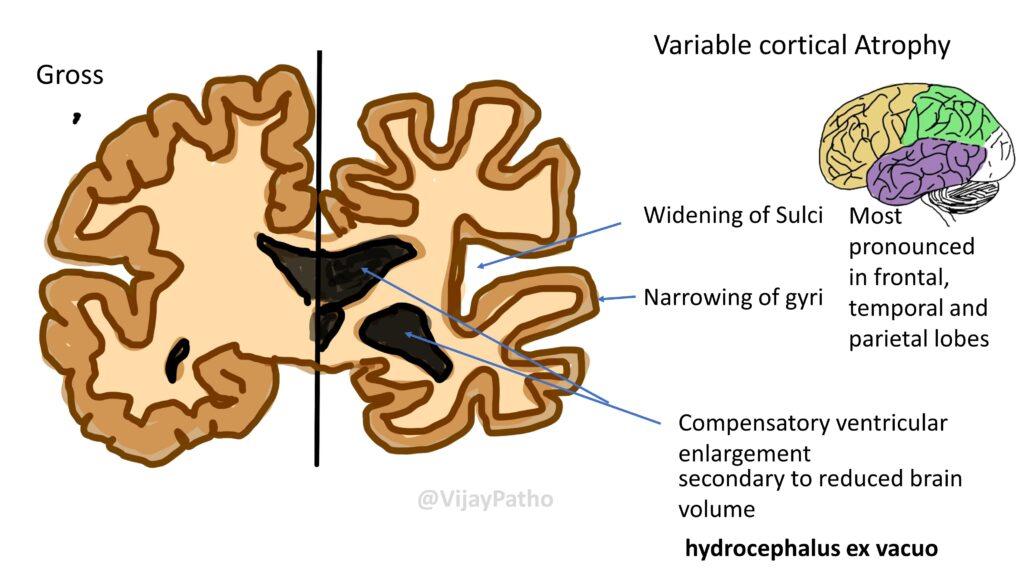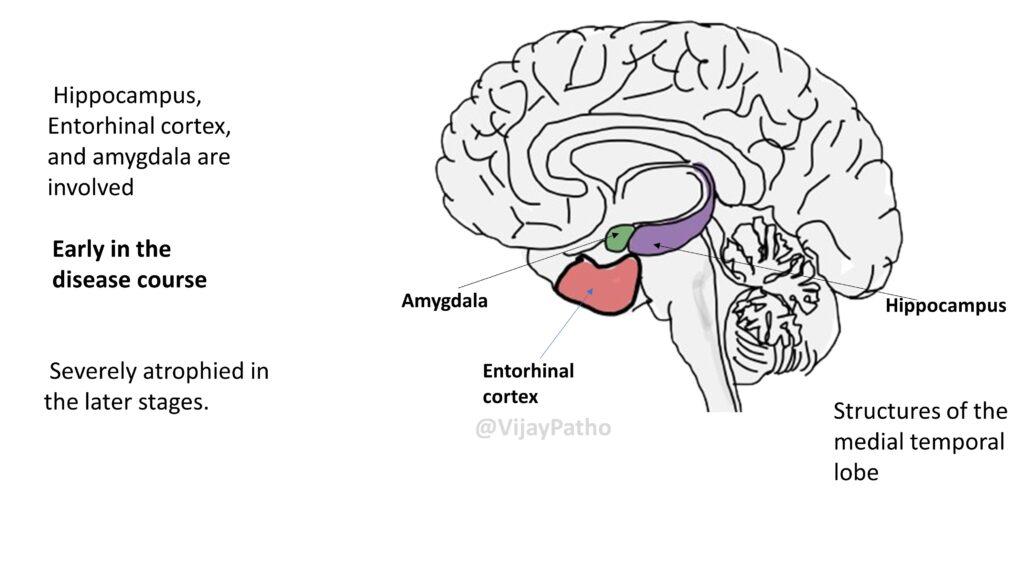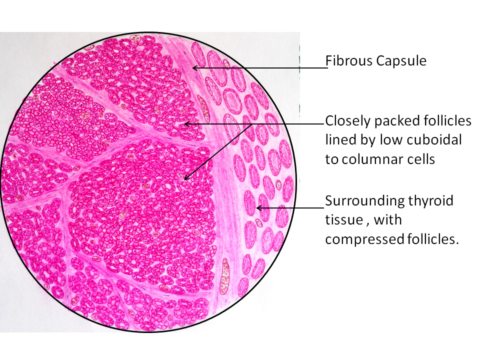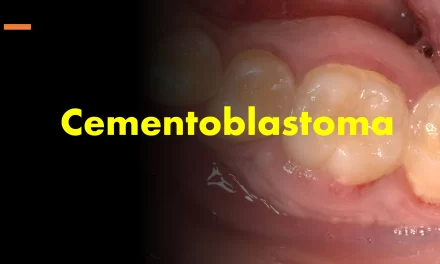What changes happen to the brain in Alzheimer’s disease?
In Alzheimer’s, the brain shows cortical atrophy, particularly in the frontal and temporal lobes, meaning it shrinks in size. This results in wider gaps between brain folds and smaller brain ridges. The brain’s ventricles, or fluid-filled spaces, also enlarge as the brain volume decreases.
Which parts of the brain are most affected in the early stages of Alzheimer’s disease?
Early in the disease, the hippocampus, entorhinal cortex, and amygdala are mainly affected. These areas are crucial for memory and emotion, explaining the early symptoms of memory loss and emotional changes.
What are the key microscopic features of Alzheimer’s disease?
The main features include neuritic plaques, which are spherical structures with a core of amyloid protein, and neurofibrillary tangles, which are twisted fibers inside brain cells. Over time, there’s significant loss of brain cells and reactive gliosis, or scarring.
What are the other findings in Alzheimer’s disease apart from plaques and tangles?
They include cerebral amyloid angiopathy, where amyloid protein builds up in the walls of brain blood vessels, and granulovacuolar degeneration, indicating damaged brain cells in the hippocampus.
What are the clinical features of Alzheimer’s disease?
Symptoms start with forgetfulness and progress to severe memory disturbances, language deficits, loss of mathematical skills, and learned motor skills. In the final stages, patients may become incontinent, mute, and unable to walk.
What is the most common cause of death for Alzheimer’s patients?
The most common cause of death is pneumonia or other illnesses that occur alongside the weakened state caused by advanced Alzheimer’s.
Can Alzheimer’s disease be treated?
Treatment focuses on managing symptoms and may involve strategies to clear or prevent the formation of amyloid beta proteins. Although there’s intense research and clinical trials ongoing, there’s currently no cure for Alzheimer’s disease.
CLICK BELOW to watch the pathological findings in great details







